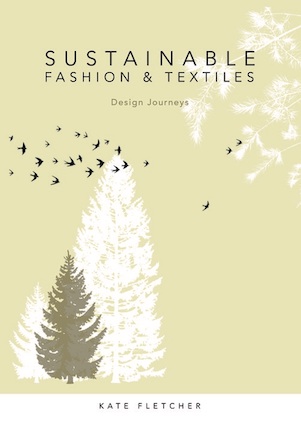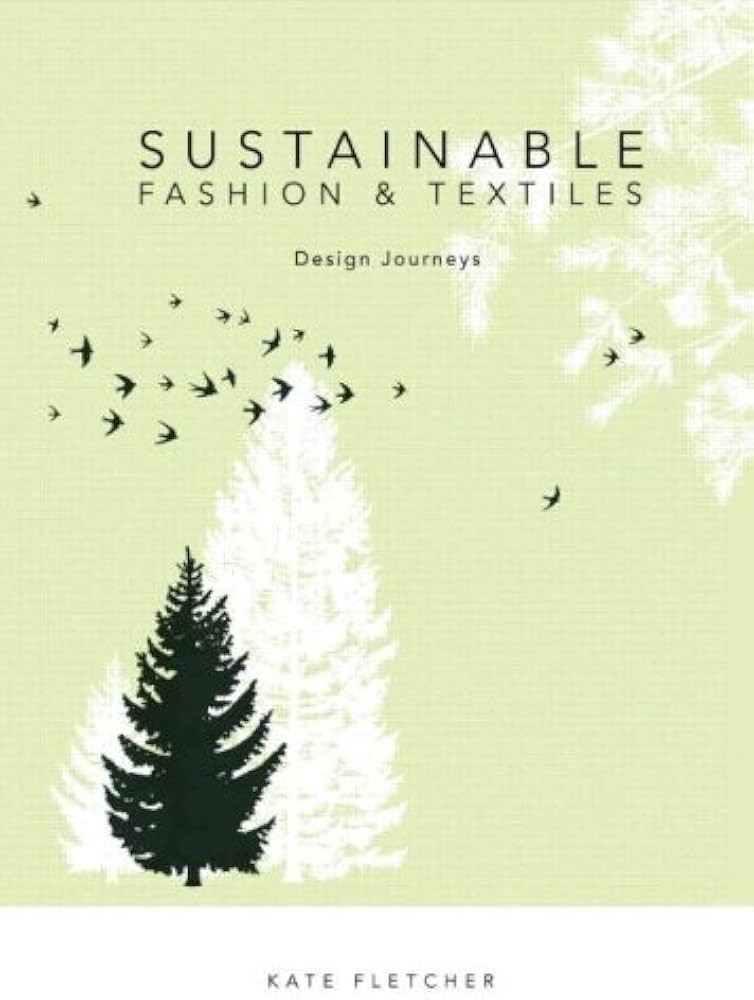Sustainable Fashion and Textiles: A Shift Toward a Greener Future
Fashion has long been associated with excess and waste. Yet, in recent years, the fashion industry has seen a significant shift toward sustainability. As environmental concerns grow and consumers become more aware of the harmful effects of fast fashion, sustainable fashion and textiles have emerged as crucial solutions. But what exactly does sustainable fashion mean, and how can we as consumers contribute to a greener, more ethical industry?
In this article, we’ll explore the principles of sustainable fashion, the role of eco-friendly textiles, and how the fashion industry is evolving to become more responsible and environmentally conscious.

What is Sustainable Fashion?
Sustainable fashion refers to clothing, accessories, and footwear produced in a way that is environmentally and ethically responsible. Unlike fast fashion, which often relies on cheap labor, harmful chemicals, and non-renewable resources, sustainable fashion focuses on minimizing environmental impact, reducing waste, and promoting fair labor practices.
The key principles of sustainable fashion include:
- Ethical labor practices: Ensuring fair wages, safe working conditions, and respect for workers’ rights.
- Use of eco-friendly materials: Utilizing renewable, biodegradable, or recycled materials such as organic cotton, hemp, and Tencel.
- Reduction of waste: Encouraging practices such as upcycling, recycling, and designing for durability to minimize waste.
- Fair trade: Supporting communities by sourcing products from suppliers who are committed to fair wages and sustainable practices.
The Rise of Sustainable Textiles
One of the cornerstones of sustainable fashion is the materials used in clothing production. Traditional textiles, such as cotton, polyester, and nylon, have significant environmental footprints. Cotton, for example, requires vast amounts of water and pesticides, while polyester is made from petroleum-based products and is not biodegradable.
On the other hand, sustainable textiles are designed to reduce environmental harm by being produced from renewable, organic, or recycled resources. Some examples of eco-friendly fabrics include:
- Organic Cotton: Grown without harmful pesticides or fertilizers, organic cotton uses less water than conventional cotton farming.
- Hemp: Hemp is a fast-growing plant that requires little water and no pesticides, making it a highly sustainable material for clothing.
- Tencel (Lyocell): Made from wood pulp, Tencel is produced in a closed-loop process that recycles water and solvents, making it an eco-friendly option for fashion.
- Recycled Polyester: Made from post-consumer plastic bottles, recycled polyester helps reduce waste and decreases the need for virgin polyester production.

How Sustainable Fashion is Transforming the Industry
The fashion industry is gradually shifting toward sustainable practices, and numerous brands are leading the charge. From clothing companies embracing eco-friendly materials to fashion designers creating collections with a focus on zero-waste designs, the changes are evident.
1. Eco-Friendly Clothing Brands
Several brands are now offering clothing made from sustainable materials, ensuring that their processes support both the environment and workers’ rights. Notable examples of these brands include:
- Patagonia: Known for its commitment to the environment, Patagonia offers clothing made from recycled materials and promotes fair trade certification.
- Everlane: Everlane focuses on transparent pricing and ethical production processes, ensuring their products are made with sustainable materials.
- Stella McCartney: A luxury brand dedicated to sustainability, Stella McCartney uses organic cotton, recycled polyester, and avoids the use of animal products.
By choosing such brands, consumers can support companies that align with their environmental values.
2. Circular Fashion
The concept of circular fashion revolves around creating products that can be reused, repaired, or recycled to extend their lifecycle. This is a direct contrast to the traditional linear model of fashion, where clothes are made, used, and disposed of. Circular fashion initiatives include:
- Clothing rental services: Brands like Rent the Runway allow customers to rent high-quality garments, reducing the need for new production.
- Clothing repair: Some companies, such as Patagonia and The North Face, offer repair services, encouraging consumers to repair their clothes rather than discard them.
- Recycling programs: Brands like Levi’s and H&M accept old garments for recycling, turning them into new products and reducing waste.

3. Slow Fashion Movement
The slow fashion movement is gaining momentum as an alternative to the fast-paced nature of the traditional fashion industry. Slow fashion focuses on quality over quantity, with an emphasis on creating long-lasting garments that are made with sustainable practices.
This movement encourages consumers to buy fewer, higher-quality items that will stand the test of time, rather than constantly purchasing cheap, trendy clothing that ends up in landfills.
- Ethical production: Slow fashion brands often work with small-scale artisans and factories to ensure fair wages and working conditions.
- Timeless designs: Slow fashion often prioritizes classic designs over fleeting trends, encouraging consumers to buy pieces that will remain stylish for years.
4. Transparency and Certifications
In response to growing demand for sustainability, many fashion brands are becoming more transparent about their production processes. Certifications like Fair Trade, Global Organic Textile Standard (GOTS), and OEKO-TEX ensure that the products meet specific ethical and environmental standards.
This transparency allows consumers to make informed choices about the products they purchase. Brands that showcase these certifications demonstrate their commitment to ethical production and sustainable sourcing.
Benefits of Sustainable Fashion
Adopting sustainable fashion practices offers numerous benefits for both individuals and the planet:
- Reduces environmental impact: By using eco-friendly materials and sustainable production methods, the fashion industry can significantly reduce its carbon footprint and resource consumption.
- Promotes ethical labor: Supporting brands that prioritize fair wages and safe working conditions helps promote social responsibility within the industry.
- Encourages conscious consumerism: Sustainable fashion encourages individuals to be mindful of their purchases, fostering a shift towards quality over quantity.
- Supports innovation: The demand for sustainable fashion has led to the development of innovative materials and production techniques that reduce waste and increase efficiency.
How You Can Contribute to Sustainable Fashion
As a consumer, you have the power to influence the fashion industry by making more sustainable choices. Here are some practical tips on how you can contribute to the movement:
1. Buy Less, Choose Wisely
Instead of constantly buying new clothes, focus on investing in high-quality, timeless pieces that will last longer. This not only reduces waste but also supports brands that are committed to sustainability.
2. Choose Eco-Friendly Brands
Look for brands that prioritize sustainability and ethical practices. Choose companies that use organic fabrics, recycled materials, and promote fair labor practices.
3. Recycle and Upcycle
Instead of discarding old clothes, consider donating, upcycling, or recycling them. Many brands offer take-back programs where you can send your old garments to be repurposed into new products.
4. Care for Your Clothes
Properly caring for your clothes can extend their lifespan and reduce the need for frequent replacements. Follow care instructions, wash clothes in cold water, and air-dry when possible to reduce energy consumption.
FAQs About Sustainable Fashion
1. What is the difference between fast fashion and sustainable fashion?
Fast fashion is characterized by cheap, mass-produced clothing that follows short-lived trends and often contributes to environmental damage. Sustainable fashion focuses on eco-friendly materials, ethical production, and long-lasting quality.
2. How can I tell if a brand is truly sustainable?
Look for certifications like Fair Trade, GOTS, and OEKO-TEX to ensure a brand follows sustainable practices. Transparency about sourcing and manufacturing processes is also a good indicator.
3. Is sustainable fashion more expensive?
While sustainable fashion can sometimes have a higher upfront cost, it’s often more durable and long-lasting, making it a worthwhile investment. Additionally, buying fewer, high-quality items can save money in the long run.
4. Can sustainable fashion be stylish?
Absolutely! Many sustainable fashion brands offer trendy, stylish clothing made from eco-friendly materials, so you don’t have to sacrifice style for sustainability.
Conclusion
Sustainable fashion is more than just a buzzword—it’s a movement toward a more responsible, ethical, and eco-friendly fashion industry. By making informed choices, supporting ethical brands, and embracing sustainable textiles, you can play a part in shaping the future of fashion. The shift toward sustainability in fashion is not just a trend; it’s a necessity for creating a better world for future generations.
To learn more about sustainable fashion and how it’s transforming the industry, visit Green Business Journal for the latest insights and trends in eco-conscious fashion.

